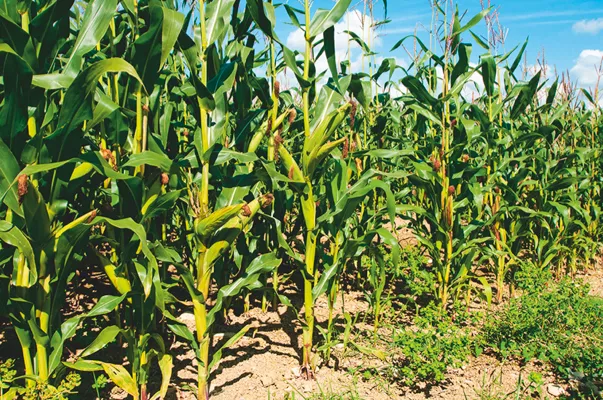A family trip to a maize maze is becoming a summer treat; youngsters getting lost in a puzzle of pathways carved through the tall stalks and greenery. But there’s much more to maize than just having an outdoor run-around.
It’s a story that goes back 10,000 years to the time when this large grain plant was first cultivated in Central America. Archaeologists there have uncovered primitive ears of maize that are tiny compared to those grown today, but they still have the instantly recognisable kernels attached along the cob. Those early farmers began to selectively breed maize, choosing the biggest, best and tastiest kernels to replant and, over the centuries, they slowly developed into today’s crop.
Versatile varieties
It is often referred to as corn on the cob, but sweetcorn is just one type of maize and food for humans is one of a number of uses for this remarkably versatile crop. The field corn varieties are used for animal fodder, ground in to corn starch, pressed to make corn oil, fermented and distilled in the American alcohol industry and involved in the manufacture of some chemicals. In the UK it has mainly been grown as food for livestock and also as game cover, providing warmth, shelter and food for birds. Most varieties are sown in the spring and, if an old farming rhyme is correct, it should be ‘thigh high by the first of July’. Maize is often one of the last crops to be harvested, in late September and into October.

Issues with maize
In recent years, the move towards ‘green’ power has seen more farmers looking at it as an energy crop, for use in anaerobic digesters. So it is no surprise that the popularity of maize-growing in the UK has rocketed. Back in 1973, there were about 20,000 acres (8,000 hectares). The latest figures suggest we are now growing in the region of 450,000 acres (183,000 hectares). But despite the obvious demand for maize, it is a controversial choice for many people and its effect on the environment divides opinion. The debate centres on the way maize can erode the soil. Opponents say the widely spaced stems and shallow roots leave the soil exposed to the elements and allow water to run off the land during the growing season. The Soil Association has called for stricter rules on the management of maize, while some have suggested suspending maize cultivation altogether.
Soil-friendly maize?
Farmers are quick to defend the way they care for the land and point out that compared to many crops, maize is more water efficient and stores more carbon. Under-sowing with a grass crop, creating field-edge buffers and beetle banks as well as planting winter cover in maize fields are all ways to protect the land that have been recommended by the Campaign for the Farmed Environment (CFE). Meanwhile, the conservation charity, the Wye and Usk Foundation in South East Wales, has been involved in practical trials into soil-friendly maize growing. While farmers and environmentalists work out their differences, one thing is certain; a big increase in maize production is predicted in the coming years, so it’s likely to become a more familiar sight in the British landscape.

